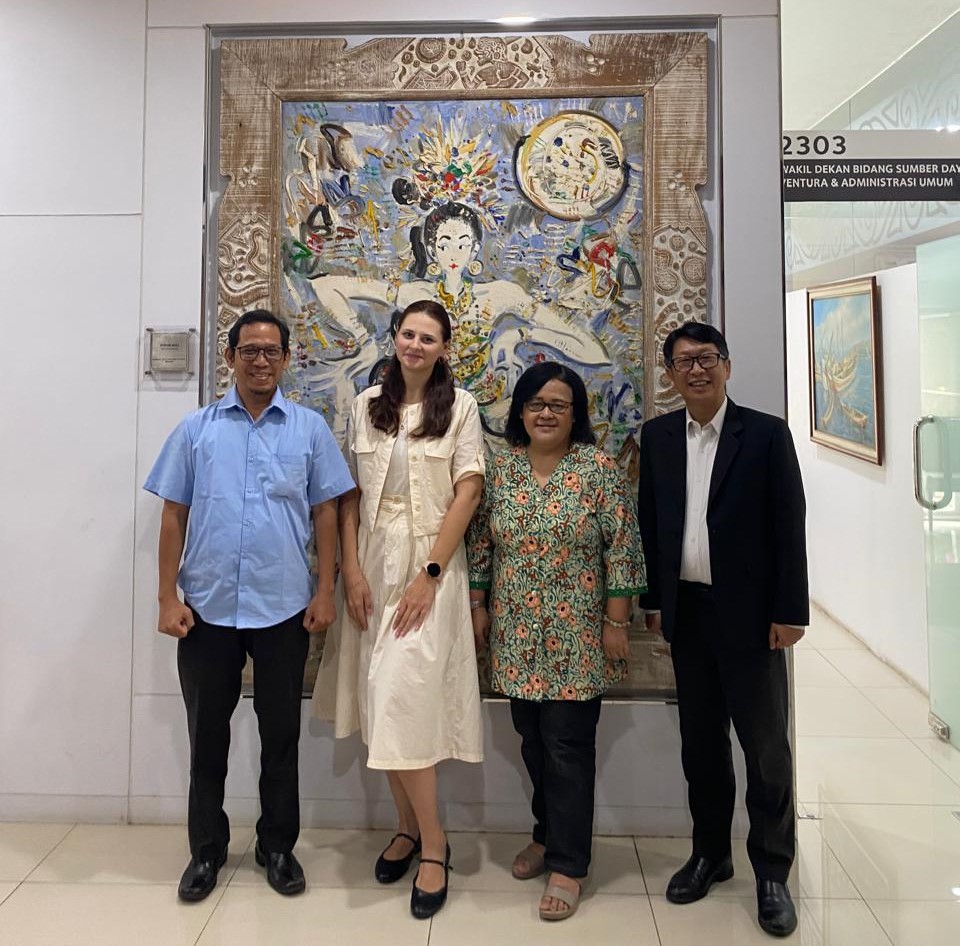The Faculty of Humanities, Universitas Indonesia (FIB UI) hosted a visit and meeting with Universiti Teknologi MARA (UiTM), Malaysia, on Monday, October 6, 2025, at Room 4112, FIB UI, Depok. The visit was led by Assoc. Prof. Sr. Dr. Siti Aekbal Salleh, as Head of the Sustainable Technology Institute of Biodiversity and Sustainable Development (IBSD), accompanied by Dr. Ainon Nisa Othman (Senior Lecturer), along with UiTM staff.
The UiTM delegation was welcomed directly by the FIB UI leadership, including Dr. Untung Yuwono, S.S. (Vice Dean for Academic, Research, and Student Affairs), Dr. Junaidi (Manager of Cooperation and Ventures), Prof. Dr. Cecep Eka Permana (Head of the Department of Archaeology), Muhamad Prabu Wibowo, Ph.D (Head of Research Grant Collaboration and Head of the Postgraduate Program in Library and Information Science), Dr. Moch Aviandy, M.Hum. (Lecturer in the Department of Regional Studies), along with other faculty staff. This visit aimed to strengthen academic ties and open opportunities for sustainable international collaboration between FIB UI and UiTM, particularly in the fields of digital humanities and data visualization-based research.
After the hearing session, the event continued with a public lecture entitled “Visualizing Digital Humanities Data: Geospatial, 3D, & Storytelling.” The public lecture was opened by Dr. Moch Aviandy, M.Hum, as the Chair of the Committee, followed by remarks from Muhamad Prabu Wibowo, Ph.D, as the Chair of Research Collaboration, and concluded with remarks from Dr. Junaidi as the Manager of Cooperation and Ventures at FIB UI. This public lecture featured three main speakers, namely: Assoc. Prof. Sr. Dr. Siti Aekbal Salleh (UiTM), Dr. Ainon Nisa Othman (UiTM), and Dr. Ghilman Assilmi, M.Hum (Department of Archaeology, FIB UI).
The speakers presented the latest developments in collaborative research between FIB UI and UiTM in the field of digital humanities. This research utilizes geospatial technology, digital data, and 3D visualization to understand the cultural and historical dynamics in the Southeast Asian region. In the first year, the research collaboration focused on exploring the role of digital data and the spatial representation of the Malacca Kingdom site through a geospatial approach. This year, the research entered an advanced stage with a focus on the Muaro Jambi site, examining environmental, social, and spatial changes around the Muaro Jambi site through the support of digital data.
This data-driven approach helps researchers identify cultural patterns that are difficult to see using conventional methods. Cross-disciplinary collaboration between archaeology, information science, geography, and digital technology is key to understanding cultural, historical, and social phenomena in the digital age. According to researchers, digital humanities can provide a new space for combining data, technology, and cultural narratives to interpret human civilization in a more holistic and contextual manner.
To conclude the series of events, an exchange of souvenirs took place between FIB UI and UiTM as a symbol of friendship and commitment to ongoing research collaboration. The event then continued with a group photo session and a friendly gathering, marking the spirit of academic collaboration that is expected to continue to grow between the two institutions in the future.




